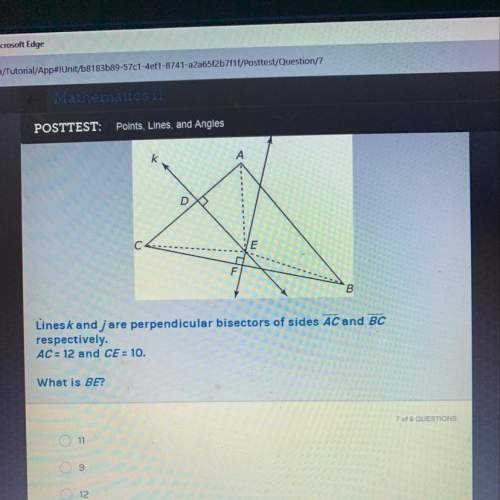
Mathematics, 09.01.2021 08:40 ilizzy1224
Fine the lower and upper quartiles and interquetile range. 5, 12, 17, 23, 28, 31, 37, 41, 42, 49, 54, 58, 65, 68, 73, 71.

Answers: 1
Another question on Mathematics

Mathematics, 22.06.2019 00:30
1.3.25 question suppose 40​% of all voters voted for a particular candidate. to simulate exit polls regarding whether or not voters voted for this​ candidate, five random samples of size 1010 and five random samples of size 10001000 have been generated using technology using a population proportion of 0.400.40​, with the accompanying results. complete parts a through c below. click the icon to view the simulation results. a. observe how the sample proportions of successes vary around 0.400.40. simulation compared to sample prop simulation compared to sample prop 1 ▾ 6 ▾ greater than 0.40 less than 0.40 equal to 0.40 2 ▾ less than 0.40 greater than 0.40 equal to 0.40 7 ▾ greater than 0.40 less than 0.40 equal to 0.40 3 ▾ greater than 0.40 less than 0.40 equal to 0.40 8 ▾ equal to 0.40 greater than 0.40 less than 0.40 4 ▾ greater than 0.40 equal to 0.40 less than 0.40 9 ▾ less than 0.40 greater than 0.40 equal to 0.40 5 ▾ equal to 0.40 less than 0.40 greater than 0.40 10 ▾ equal to 0.40 greater than 0.40 less than 0.40 click to select your answer(s) and then click check answer. 2 parts remaining clear all check answer
Answers: 3

Mathematics, 22.06.2019 02:30
The volume of a spherical hot air balloon v(r) = 4 3 ? r3 changes as its radius changes. the radius is a function of time given by r(t) = 3t. find the instantaneous rate of change of the volume with respect to t at t = 2.
Answers: 3

Mathematics, 22.06.2019 03:10
Write the point slope form of the equation of the line passing through the points (-5, 6) and (0.1).
Answers: 2

Mathematics, 22.06.2019 04:20
When booking personal travel by air, one is always interested in actually arriving at one’s final destination even if that arrival is a bit late. the key variables we can typically try to control are the number of flight connections we have to make in route, and the amount of layover time we allow in those airports whenever we must make a connection. the key variables we have less control over are whether any particular flight will arrive at its destination late and, if late, how many minutes late it will be. for this assignment, the following necessarily-simplified assumptions describe our system of interest: the number of connections in route is a random variable with a poisson distribution, with an expected value of 1. the number of minutes of layover time allowed for each connection is based on a random variable with a poisson distribution (expected value 2) such that the allowed layover time is 15*(x+1). the probability that any particular flight segment will arrive late is a binomial distribution, with the probability of being late of 50%. if a flight arrives late, the number of minutes it is late is based on a random variable with an exponential distribution (lamda = .45) such that the minutes late (always rounded up to 10-minute values) is 10*(x+1). what is the probability of arriving at one’s final destination without having missed a connection? use excel.
Answers: 3
You know the right answer?
Fine the lower and upper quartiles and interquetile range.
5, 12, 17, 23, 28, 31, 37, 41, 42, 49, 5...
Questions


Mathematics, 04.01.2021 22:30


History, 04.01.2021 22:30


Social Studies, 04.01.2021 22:30

Business, 04.01.2021 22:30

Mathematics, 04.01.2021 22:30





Mathematics, 04.01.2021 22:30


Geography, 04.01.2021 22:30

Mathematics, 04.01.2021 22:30

Engineering, 04.01.2021 22:30



Biology, 04.01.2021 22:40







